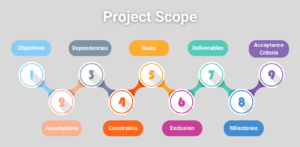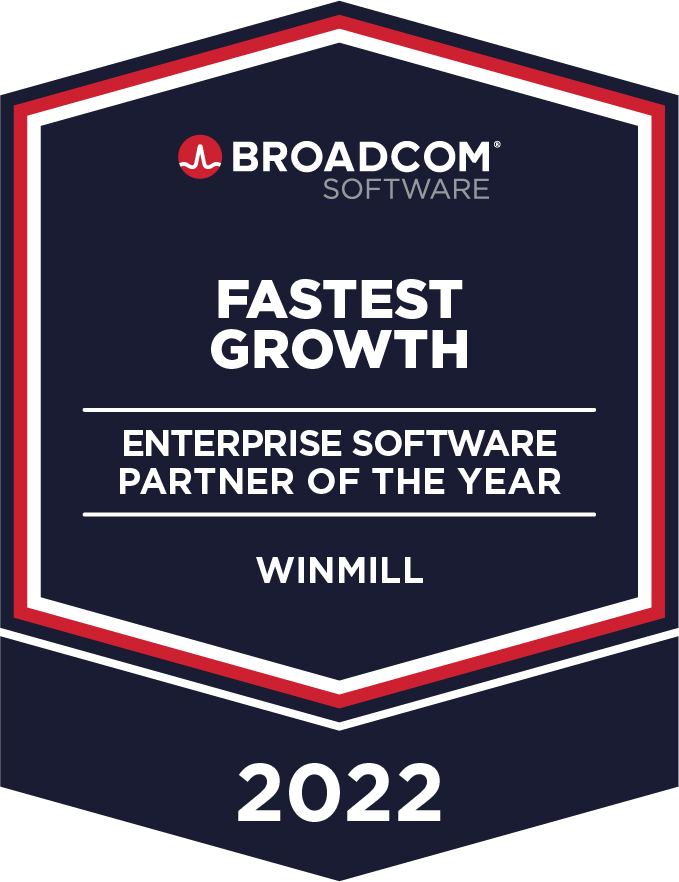What to Include in a Project Scope Statement
By: Baglan Rhymes, Waleed Salha
What to Include in a Project Scope Statement?
No other document in project management impacts the course and the project’s success as much as the Project Scope Statement does.
It defines the project’s boundaries, enables a common understanding of the project, and guides the team in project execution. As a primary tool in project management, it helps the teams navigate safely through the challenges that may push the project out of its tracks. And when things go south, a well-written Project Scope Statement can be a saving grace for project managers.
So, how does one craft a solid Project Scope Statement to help project managers accomplish the above? The nine essential lists below will get any project started on the right foot:
Objectives:
An objective is a smaller and measurable step towards the goal, which is broader and an intended long-term outcome. The project manager may start the project scope statement by establishing and defining the project objectives. The objectives can be expressed as outputs, outcomes, benefits, or strategic objectives. They must be clearly defined and written to be specific, measurable, achievable, relevant, and timely.
Assumptions:
Assumptions are events, circumstances, or factors that are considered true or certain but are not explicitly stated or proven. They can impact the project in various ways and must be documented to avoid confusion later on. Including a list of assumptions in the project scope statement can help project managers make informed decisions, minimize risks, and avoid surprises.
Dependencies:
Dependencies are tasks or activities that rely on each other to be completed. Understanding dependencies is essential for effective project planning, resource allocation, and risk management. Identifying and documenting project dependencies in the project scope statement can help project managers stay on track and avoid delays.
Constraints:
Project constraints are the limitations a project team may face during the execution. These constraints set project boundaries around which the team has to operate. These constraints can be divided into internal and external project constraints based on the organization’s ability to control them.
Cost, time, risks, scope, time, quality, and resources are classified under internal constraints, while economic, legislative, social, environmental, and technological constraints are considered external. Identifying and listing all the potential restrictions can help develop a quick and effective solution when such issues crop up.
Risks:
Risks are potential events or situations that can negatively impact project objectives. They can be identified, assessed, and managed using risk management techniques. Including a risk management plan in the project scope statement can help project managers anticipate, mitigate, and respond to risks effectively.
Exclusions:
In addition to describing what the project includes, project managers must also explicitly state the list of elements agreed to be excluded from the project.
This exclusion list identifies and lists the products or services outside the project scope to clearly define the project boundaries. Together with a deliverable list, the exclusion list helps reduce scope creep and makes it easy to manage stakeholder expectations.
Deliverables:
In project management, a deliverable is a tangible output that results from the completion of objective-focused work within the project process. Deliverables can be internal or external and are essential to the project’s scope. Some examples of deliverables include an initial project strategy report, a budget report, a progress report, a beta product, and a test result report. Any quantifiable result that is produced as part of the project is considered a deliverable.
It is critical to clearly describe the intended deliverables in this section and ensure project stakeholders understand them. This deliverable section presents a shared vision of the project and criteria for measuring the outcome’s success.
Milestones:
Milestones are significant points in the project timeline that mark the completion of a major deliverable or achievement of a critical goal. They provide a way to track project progress, measure performance, and communicate with stakeholders. Including a list of project milestones in the project scope statement can help project managers stay focused, motivated, and accountable.
Acceptance Criteria:
Sometimes there could be a mismatch of deliverable expectations among the project members of stakeholders even when the deliverables are clearly defined in the scope statement. Acceptance criteria aim to bring everyone on the same page by clearly defining the conditions that must be met before the deliverables are deemed acceptable.
Well-documented acceptance criteria avoid unexpected results at the end of the project and ensure that deliverables meet the requirements and expectations commonly agreed upon.

Including the above elements in your Project Scope Statement reduces the risk of scope creep, aids in precise planning, assists in managing stakeholder expectations, and gives you greater control over the project output.
In summary, a well-crafted project scope statement that includes all the critical elements can set the stage for a successful project. Let’s not forget that every project is unique, and the project scope statement may need to be adjusted accordingly. By using a comprehensive project management solution like Planview AdaptiveWork (formerly known as Clarizen), project managers can stay on top of their projects, collaborate effectively with their teams, and deliver high-quality results.
Planview AdaptiveWork is named a Leader in G2’s Grid Report of Project & Portfolio Management Software. The AdaptiveWork platform connects work across the enterprise by combining project management discipline, workflow automation, and collaboration to turn ideas into strategies, plans, and actions. AdaptiveWork allows organizations to work the way they want and access their workstreams in real time.
A comprehensive Project Management Solution that offers greater visibility and a high-level view of your project’s progress can help you ace your project scope management.
Get in touch with us today to find out how Winmill PPM (Project and Portfolio Management) (Project and Portfolio Management) can assist you with every stage of your project management: PPMInfo@winmill.com

